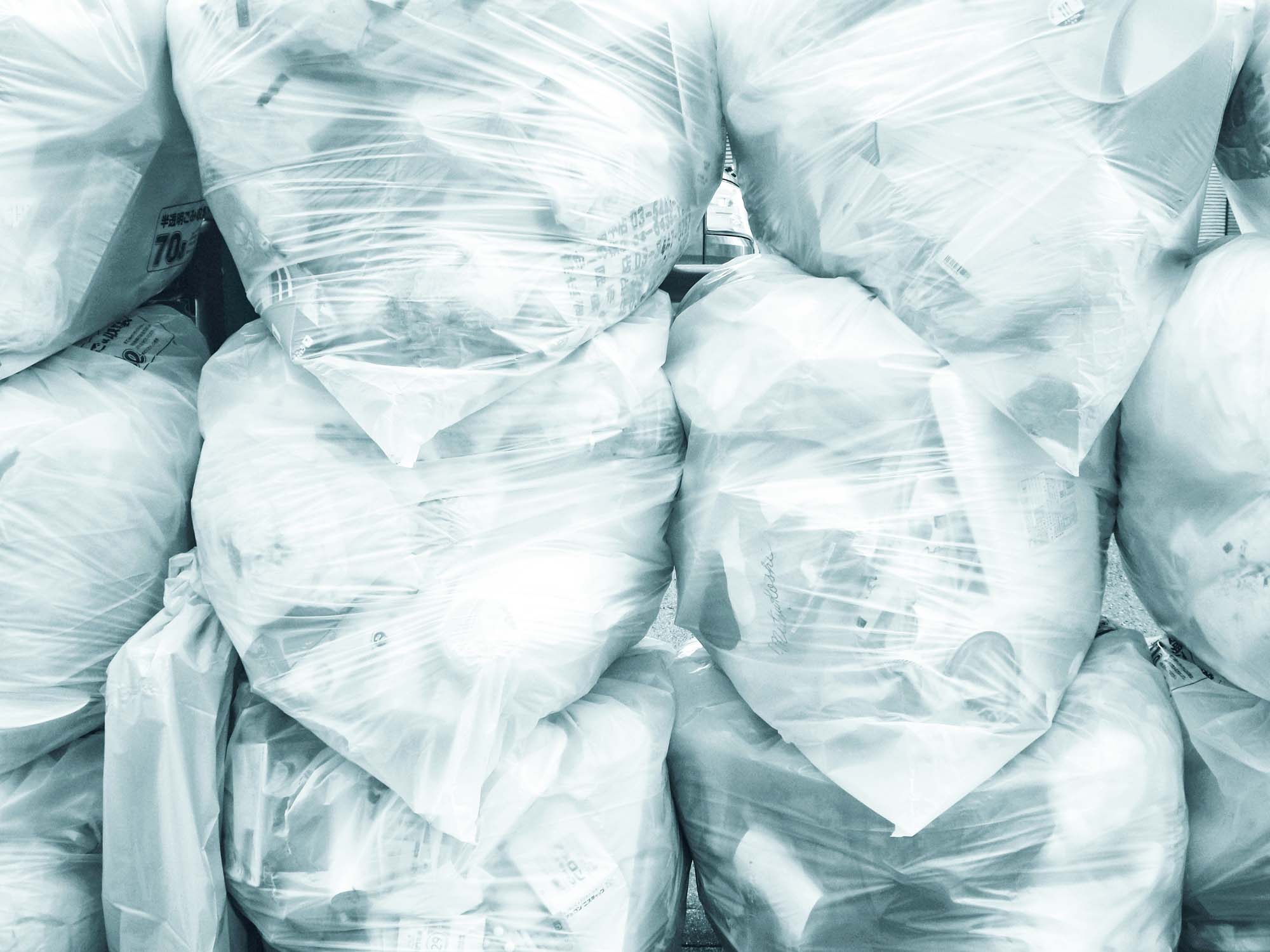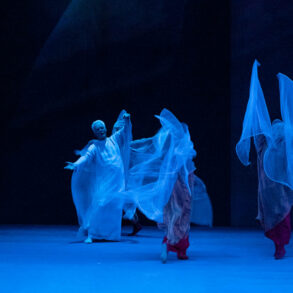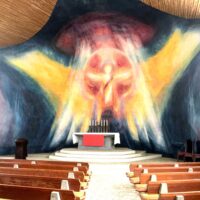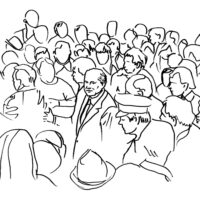A conversation about global and personal steps with the architect, entrepreneur, and sustainability researcher Thomas Rau. The questions asked by Andrea Valdinoci.
You often surprise people talking with you with new thoughts. One of them is that we need less information to make change possible. What do you mean by that?
I believe that we have no shortage of information. We are exposed to such a flood of information that we can no longer consciously process it, let alone consciously evaluate it all in order to act with the corresponding consistency. In fact, I believe that every place that offers more information is one place too many. We need places that offer less information but convey more knowledge and tap into wisdom. I think it’s more about restoring the glory of the human brand, of which we are all a part after all, and letting it flourish. In other words, we are spiritual beings on a human journey, not human beings on a spiritual journey. It is about creating places where we engage people to follow their own insights and to be able to consciously dedicate themselves to their humanity.
How is that done?
There are many interesting initiatives, for example by Marina Abramovic. The artist offers workshops on ‹cleaning›, she calls it ‹Cleaning your house›. For a week together, you give up everything except your underwear. You even have to say goodbye to that from time to time. And no computer, no books, no smartphone, nothing. Get up at sunrise, go to bed at sunset, do various intensive perception exercises every day, don’t eat anything, don’t drink anything except a little tea, and, most importantly, don’t speak. So absolute silence is the order of the day. It’s a journey to experience your own mental and physical limits and to perceive them in an awake state. I believe that these are the universities of the future, which do not offer more information but which educate the original human being in their humanity. A true educational institution. One of our problems is that we do not activate being human but rather being consumers. So most educational institutions tend to miseducate. But this does not bring out the human being in us. That is my hope, that we will succeed as humanity in developing our instruments to activate being human.
You are an architect and helped discover and implement ‹Cradle to Cradle› in the building industry – in other words, the unconditional circular economy. You are now moving from architecture to the architecture of systems. What kind of path is that?
It started in my childhood. I am the third and youngest son and was probably quite difficult to raise. When I was ten, we organised a barbecue with some friends. But because it had started to rain, we wanted to eat as quickly as possible. But we thought it was taking far too long for the sausages to cook properly. To stoke the barbecue fire further, I took a petrol can to pour some petrol on the fire, not knowing that the petrol can would explode in my hand faster than the petrol would be on the fire. I suffered severe burns from my waist down. For months I had to lie day and night with the curtains closed, in unbelievable pain and without clothes. Emotionally, death was very close to me during this time. The temporal nature of my existence became clear to me very early on. The fact that I first had to grow a new skin to be able to encounter the world again is also symbolic: since then I have had to create the skin, the contexts I needed, mostly myself. In my youth, I was always an outsider. There was no ready-made nest, no real circle of friends. I was driven by many thoughts that I could only share with very few people. That’s why situations often arose that repeatedly led to misunderstandings.
For example, in art class we were given the task of creating a work of art in the style of Dadaism. So I had built a large wooden coffin with a mirrored floor and hung it in the stairwell of the school. When people wanted to know what or who was in the coffin, they saw themselves in the mirror. This caused quite a stir and I was on the verge of having to leave the school. For me, it was a completely incomprehensible situation.
After school, I first trained as a preschool teacher and then went on to study. However, I had not yet decided on a course. One night I heard a voice in my dream telling me to study ‹architecture›. Until this dream, I had never occupied myself with architecture. But I intuitively followed this ‹call› and studied architecture in Aachen, something I still don’t fully understand even today. What frustrated me in my studies, however, was that I learned ‹how› to build, but not ‹for whom› to build. After all, architecture is also a service for the human being as such. Architecture creates spaces in which people develop professionally, socially, and biographically. Architecture reflects human consciousness.
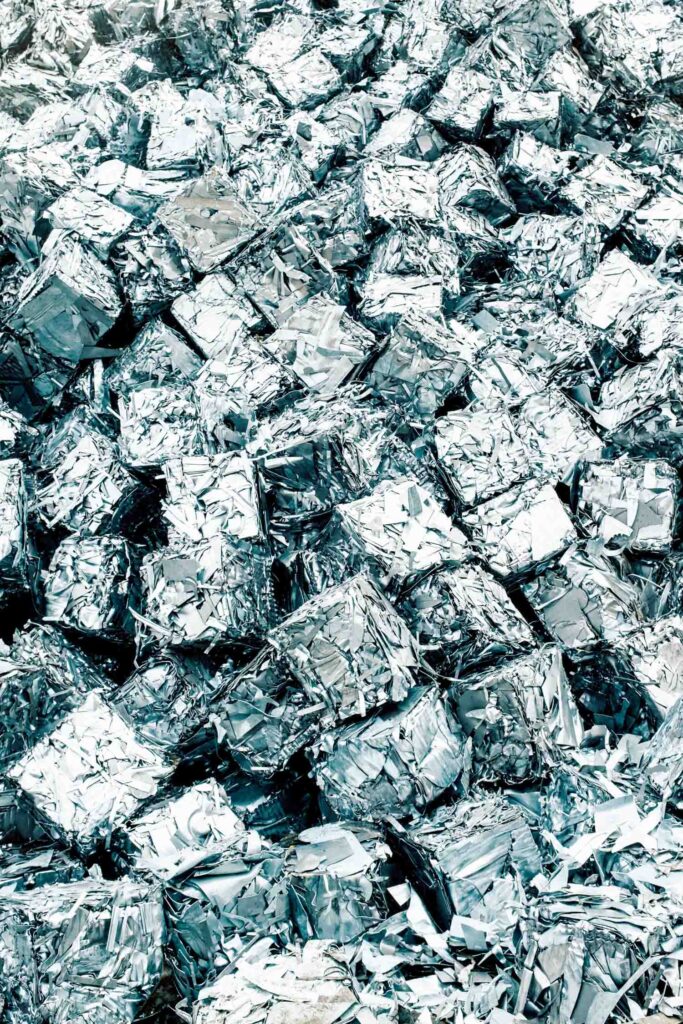
And that led you to Alanus University?
Yes, again an interesting situation. In 1984 I read an article about Anthroposophy in the magazine ‹Der Spiegel›. That also referred to Alanus University. That same morning I got into the car and drove to the Alanus art college in Alfter with the idea that it must be a large university. I looked desperately for a large building complex until I realised that I had already driven past a few times and was now standing in front of it. It was an old former winery, the opposite of what I had expected, and yet I had the feeling: «This here is my place. You have no idea what’s happening here, but this is what you want.» That same week I enrolled there to study architecture. I felt that there I could be connected to a ‹stream› that I had been looking for and never found until then. When I was then directly offered the role of Joseph in the ‹Oberufer Christmas Plays›, which I had never heard of at the time, I didn’t hesitate for a moment. The first year was fantastic. An ‘artistic spa’ in my life. Then, at the end of the first year, I got a telling off from some fellow students. They accused me of betraying Anthroposophy because I was still enrolled at RWTH Aachen university. In their eyes, I had not adopted Anthroposophy.
My dilemma was this: at Alanus University I encountered the essence of the human being, in Aachen I learned to build and I wanted to become an architect for people and not to service business models. Wilfried Ogilvie and Peter Ferger, co-founders of Alanus University, taught architecture and sculpture respectively at the time. They allowed me to develop my own curriculum for my studies. Every study day had to begin with eurythmy, alongside the ordinary study in eurythmy. As a personal research project, we tried doing floor plans, sections, and elevations in eurythmy alongside the regular eurythmy. An incredible experience of self-correction. I don’t know what I would have done in my life if I hadn’t got to know eurythmy. It became the ‹key› for many things, actually for everything I do. I am incredibly grateful for that.
In addition to Alanus University, I also continued my studies in Aachen at RWTH. After graduating, I went to the Netherlands because Holland was an El Dorado for architects.
There you founded the International Forum Human and Architecture (IFMA) with Wilfried Ogilvie, Nikolaus Ruff and Rudolf Mees?
Yes, we wanted to advance interdisciplinary collaboration. This is what it’s all about, whether you’re a lawyer, a dentist or an architect, it doesn’t really matter because it’s always about the same essence, and we wanted to address this and organised conferences in Amsterdam in 1990, in Järna in 1992 and then also at the Goetheanum in 1994. I then concentrated my work here in Holland and founded RAU Architects, through which we were involved with up to 55 architects in almost all the large, sustainable building projects in Europe.
Form, function, character – this triad occupied me intensively, with the aim that a whole grows out of it. This gives the building an identity. My motto is ‹the human being and architecture› and that is always a question of dialogue. Therefore during these periods of building dialogue was my basic motif, be it schools, hospitals, town halls or office buildings. Architecture as a conversation, a conversation with all physical and non-physical aspects. By the way, sustainability has been fully integrated into our architecture for 30 years.
Then ten years ago came a new turning point. I got rubella for the second time in my life! I went to my family doctor and he told me: «Thomas, when you turn 50 and you get rubella for the second time in your life, you’re still not doing what you set out to do in your life.»

And that hit home?
To the core. I knew immediately that it was true. My whole biography slid past me and I had an inkling that I had defined the term architecture far too narrowly. There is the classic term architecture and the built environment, but there is also system architecture and fundamental change only happens through a different kind of system architecture. So I founded a second architectural office that deals with system architecture. After all, change is the only constant.
In addition to RAU Architects, I founded ‹Turntoo› together with my wife Sabine Oberhuber. So for twelve years now, we have also been busy supporting large companies in building new business models. ‹Light as a service› was one of the first models we developed for Amsterdam Airport, among others. We integrated the idea of the circular economy into building culture. Together with the Ellen MacArthur Foundation and McKinsey, we contributed to the Davos World Economic Forum, but my impression is that if you really want to change something, you don’t need to go there.
Perhaps I may give another example: we are the guest and not the host on this earth. All non-growing materials are limited because the earth is a closed system. So there is no scarcity of raw materials, just as there is no scarcity of art. After all, there is no scarcity of Rembrandt paintings, but the painter painted a limited number of paintings. Just like these limited works of art, the materials, the works of art of the earth, are a limited edition. Only sometimes the limits are still so far away that you don’t notice them, and then we speak of a scarcity of raw materials and mean by that an unlimited amount which unfortunately is not available at the moment, but ‹scarce›. But there is no such thing as a raw material shortage! Just as there is no Rembrandt shortage or Mondrian shortage, they are simply limited editions. And we also know from art that when something is limited, we value it especially and make sure it is preserved. We build expensive museums, expensive repositories for art. And we actually have to do the same with materials, raw materials. We simply have to realise that a building is actually a museum for materials.
Furthermore, our existence is temporal and thus our needs also have a temporal character. This means that every built response to a temporal need is a temporal aggregate. These temporal aggregates only come about with the help of limited edition materials. In plain language, this means that all buildings must also be designed as temporary storage facilities for materials. After all, we have to serve the ever-changing temporality with limited resources. Materials deserve the same attitude as works of art created by human beings.
Right, and the third thought is that we said to ourselves: waste is material without identity.
What did you develop from that?
If you could give all materials a documented identity, then they can never be wasted again. In 2012, I, therefore, introduced the ‹Material Passport› for the built environment. In 2017, we founded the ‹Madaster›, which is a cadastre for materials in the sense of a data library for materials. For the surface management of the earth, also limited, by the way, we have the cadastre, the data library; for the material management on this earth it is the madaster. This is an online platform where you can register all the materials you have used in the building. The platform is now operational in seven countries and at the end of the year, Luxembourg and Great Britain will be added. The idea is to offer it worldwide on an ongoing basis because humanity needs to know where all the limited materials are that have been made available to us here on this spherical buffet called Earth. Because with these limited things we need to satisfy unlimited needs. Because our being is temporal, our needs are temporal, so every answer to our needs is also of a temporal nature, so everything is actually a temporal aggregate, and this only comes about when I use limited materials. How can I actually extract all the materials from this product again so that I can in turn create new things with them? Every product actually becomes an organised materials store. For example, the new headquarters of Triodos Bank (12 500 m2), designed by RAU, is the world’s first office building that can be completely dismantled without losing any materials or reducing their value. So all the fixings are dry. In this case, 165 313 screws were used. It is not only a materials store but also a materials bank, because the financial value of the ‹stored› materials is to be capitalised on the balance sheet.

In your book you write: The mines of this world are the libraries of materials.
Yes, that is the step. It is important to think things through to their end, and one such ‹end step› will be that we can never again own materials, but only borrow them for a time. We have the value chain and it starts with the earth. Then we have the states, the mines, the extractors, the producers and the customers. Everyone in this chain is looking for the next person to take the materials or the product from them. So I can always continue in the forward direction in the value chain. The customer is at the end of the line and it’s like the saying: Get behind me, devil! What can they do? Either they throw the things away at some point, take them to the recycling centre or hand them over to their grandchildren as an unwelcome interim solution. They have no one in the forward direction to take this value, this product from them, and thank them for it. A chain that ends in waste is not a value chain, but a value destruction chain. Our thought: how about building the chain in the other direction as well?
What does that mean?
Materials are either used in the forward direction to create value, a product in the value chain, or they are used in the backward direction to maintain their value in the value chain. It’s like in the library: I borrow a book to read it and then I return it! The books are administered and owned communally by the city. Materials are actually administered by humanity and are therefore humanity’s property. Materials are then a service. By this route, a mine would no longer sell materials but the mines become the stewards of humanity for the materials and simply get a certain interest rate for providing their copper or whatever from the earth for a certain period of time. Then materials become a service. Imagine what it means for economically disadvantaged developing countries! They are no longer exploited but they manage their raw materials as humanity’s property! This requires us to redefine the question of ownership. We are not talking about a trick here, but about a fundamental cultural shift that we as human beings have to organise.
What does the madaster look like in concrete terms?
Someone wants to build a house, downloads their drawing from the Internet and finds out how much co₂ it consumes, how many materials are tied up with it. It’s like bookkeeping. As a house owner, I am then not only a property owner but I also borrow materials for it which are on my balance sheet. It’s actually quite simple.
Surely this also has financial and political consequences, such a turning point?
Of course. The system affects everything and everyone. We don’t have to think in a new way about the world. We just have to think in a new way. I think the very biggest vision is reality and we don’t want to face that. That’s why we are making such a fuss. It means we need a new political system, we need to deal differently with money, differently with property, differently with mobility. And so on. And I try to make my small contribution and also to implement things directly. Right now, I am intensively involved with the energy issue. I think that we have a freely accessible energy for humanity. And that’s where I’m looking now, maybe I’ve even found it. I can tell you more about this in the autumn at the WGA Forum at the Goetheanum. But I’m always looking for a new sector where I can advance my own research. And everything I think I try to implement directly in our own buildings, like the Triodos Bank office, the first office building in the world capable of complete ‹reassembly›. You could completely dismantle it without losing any material. It just requires a new way of thinking, and it seems to me that’s where the key lies. If we both say, let’s run a marathon tomorrow, we probably won’t get that far because we haven’t trained. And that’s the same with the new way of thinking, it also requires peak performance, it’s also a high-performance sport in which you simply have to train every day, every day, to make progress. And of course there are all kinds of terms for this, also in abundance within Anthroposophy.
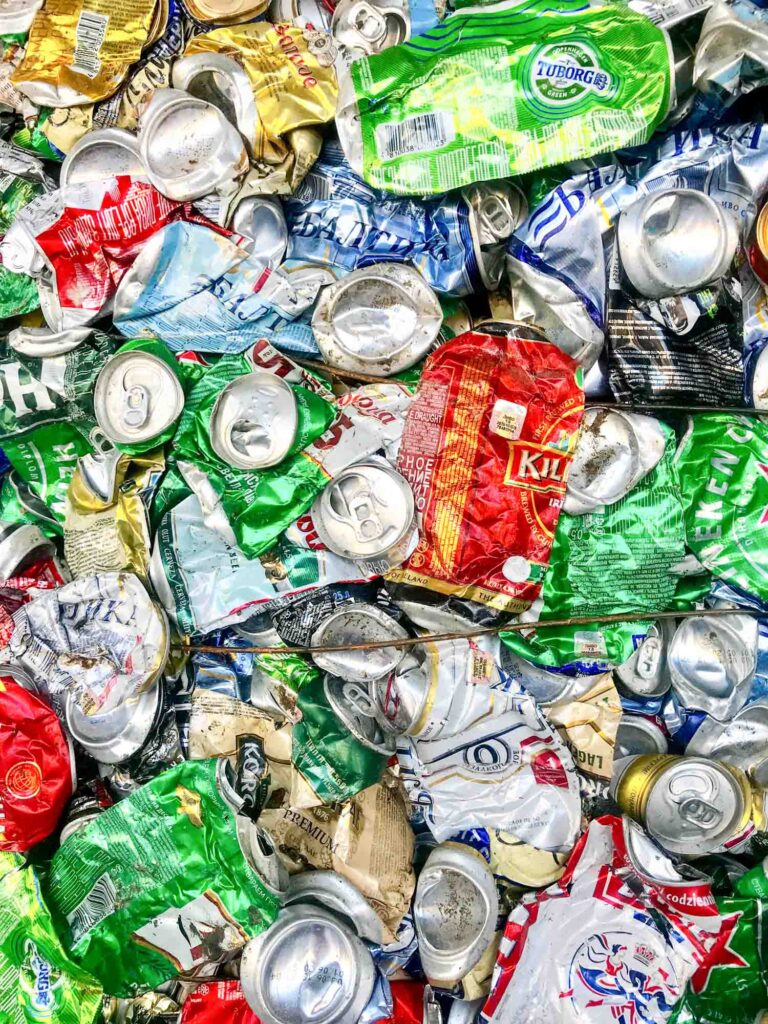
You have emphasised that eurythmy has helped you to perceive your body as a ‹musical instrument›, that eurythmy has enabled you to do many things. Now you have mentioned the performance gap. You have repeatedly succeeded in closing it and developing solutions. How do you manage this?
I had problems with my teeth during my time at Alanus and was therefore treated by an orthodontist. She said one of my four incisors had to be extracted because my ‹dining room› was too small. There are too many chairs in there. I got braces, removable braces. Now when I was doing eurythmy, my jaw began to hurt terribly. That was not pleasant. At some point I mentioned it to the orthodontist. She was an Anthroposophist and recommended that I take off the braces before eurythmy. But after one and a half hours of eurythmy I could no longer put them back in. That’s when I understood: in these one and a half hours, one of the most solid components of my body, namely my jaw, started to move! That fascinated me very much. So I see my body as my instrument on which I can play my life. I realised how little I know my own instrument.
What followed then?
To an even lesser extent than I am familiar with my instrument am I able to tune it myself so that it can play along in the great social orchestra. This is what eurythmy does for me. Eurythmy is not only the consciousness in movement but it tunes my ‹body› instrument so that I can live my life, my biography. Of course, this is a daily thing that you should also pay attention to every day. That is the key for me, because what you can move in terms of content you can also move externally. And what is moved externally can be an inner guide to movement. That’s how I’ve always dealt with architecture, and that’s my guiding principle, why I do things the way I do. I don’t do anything special. What I do, anyone can do. I’m just looking for my instrument and how to play it. Maybe I should rather say, you are actually a whole orchestra, sometimes you only play one instrument, but you have the double bass and the saxophone in your right trouser pocket. That’s the fascinating thing, that you can always discover another instrument in yourself. So I’m actually always just searching for my humanity and what possibilities I have in this life. And I want to play them, as the saying goes.
I have repeatedly come across the topic of collaboration in my life. It’s not so much about getting ahead of yourself as it is about learning how we work together. Where and how do you practice collaborating with others?
For me, this is not a should or a must, but a want. Whoever doesn’t want something is looking for a reason. Whoever wants something is looking for the way. I am always looking for the way, because I think the tasks of our time are so incredibly complex that a one-sided answer will never do justice to the complexity. So the world needs coordinated answers now. And on the other hand – it’s like in the orchestra – someone who plays badly will never be allowed to play in the orchestra. A person has to master their instrument superbly well in order to be in any position at all to play anything with others. Collaboration is not automatic but also has prerequisites, namely that you master your musical instrument well. I think this step is often forgotten, and then you are surprised why playing together doesn’t work. Those who want to change the world are often themselves the biggest obstacle to their ambitions. That’s why training your own instrument is important in order to be able to play together at all. Wanting to change the world alone – is courageous …
And your own key, which we are talking about here. How would you describe your message in three sentences?
That is a good question. We have no lack of information, but we also have no lack of insight. But when insight meets psychological resistance, it never enters the world. We are all simply wounded in some way. We have personal grievances, we have national grievances, we have global grievances. When insight meets grievance, it never goes well. We should take a good look at what our own grievances are, where they lie. We should come to terms with them, because otherwise we will not be able to really implement the insights. The personal grievances, on whatever level, are often the reason that something does not enter the world. We should all work on this. It is important to take grievances seriously. In reality we have quite different tasks. This is connected with the fact that we can only be disappointed about our own expectations. We therefore need to manage expectations differently, which actually means being human. And then, then we can actually get there. I don’t want to say it’s an easy path, but it’s a path full of joy.
Photo Possessed Photography / Unsplashed – Translation Christian von Arnim

